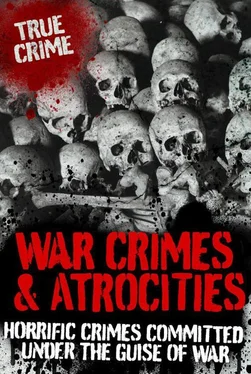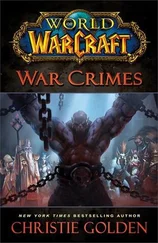What is immoral is war itself. Once full-scale war has broken out, it can never be humanized or civilized, and if one side attempted to do so it would be most likely to be defeated. That to me is the lesson of Dresden.
Others, however, had a different perspective. It was argued that Dresden had not been a city that had any particular military importance, and that nothing was achieved by bombing it, beyond destroying thousands of innocent people and desecrating one of the great cultural centres of the world. The burning to death of over 35,000 people, they claimed, was a war crime comparable to what went on in the concentration camps of Nazi Germany. Moreover, they pointed out, when the bombing of Dresden took place, victory for the Allies appeared to be a certainty and was only weeks away. It was unnecessary and seemed to spring from a mood of anger and revenge on the part of the Allies rather than being a careful military strategy to inflict damage on the German war machine.
Critics also point out that Britain has never apologized to Germany for the bombing of Dresden. While German politicians have spoken in public of the nation’s guilt at the bombing of Coventry and other events during the war, there has been no public apology from Britain for similar attacks. Indeed, when the British queen visited Dresden, she did not lay a wreath for the dead at the cathedral there, or make a public apology about the bombing. She did, however, host a concert in Berlin to raise money for the rebuilding of the Dresden Frauenkirche, a building that was once regarded as an architectural masterpiece but was reduced to rubble in the bombing campaign.
At the end of World War II, Germany, Japan and other nations from the Axis powers became the focus of many investigations for war crimes and crimes against humanity. However, the Allies were not investigated for the simple reason that they had won the war and therefore became the legislators of the settlement made after the conflict. To many commentators, this seems a patently unfair situation, allowing Britain, the USA and the other Allied nations to get away with war crimes, atrocities and revenge killings of all kinds, while prosecuting the Germans and Japanese for their part in the war. Of course, it can be argued that Germany was the aggressor in World War II, and that the Third Reich was the most evil regime to come to power in modern history; but even so, it seems that the Allies were far from blameless in their conduct and that it is hypocritical to ignore this. Thus, in recent years, there have been several journalists, historians and researchers who have debated this state of affairs, claiming that the time has now come to redress the wrongs suffered by the losers in World War II, and that the bombing of Dresden must be regarded as one of the great war crimes that, to date, has gone unpunished.
10 November, 1938

Kristallnacht was a horrific attack on thousands of Jewish people living in German and Austrian cities. It took place on the night of 10 November, 1938, when, in a frenzy of anti-Semitism, Nazi stormtroopers and ordinary civilians rampaged through the streets, smashing the windows of Jewish homes, shops and businesses. Afterwards, the streets were covered in broken glass, and it was this that gave rise to the name, Kristallnacht, meaning ‘Night of Broken Glass’.
Kristallnacht, or ‘Pogromnacht’, as it is now known in Germany, marked the beginning of the end for the Jewish population of Germany. It set in motion the events that led up to the Holocaust, in which over six million Jews were murdered. During the pogrom, many Jews were beaten to death and hundreds of synagogues burnt to the ground. Around 30,000 Jewish men were taken prisoner and sent to the concentration camps.
FORCED MARCHES
The pogrom took place against a background of rising anti-Semitism in Germany that had been building up since the Nazis were elected in 1933. Up to that point, German Jews had been well assimilated in the population and had become successful in various fields, especially business, science and the arts. However, once the Nazis came to power, a series of harsh, anti-Semitic laws were passed that excluded them from the rest of the community and undermined their livelihoods. As a result, many Jewish families left the country, but it was not always easy for them to do so, because of anti-immigration laws elsewhere. Thus, many were forced to stay behind to face the full horror of German fascism.
According to some sources, the Nazi government planned the pogrom well in advance, hoping to whip up public sentiment against the Jews and thus gain the help of the general populace in persecuting this minority group. On 28 October, 17,000 Polish Jews were forced to leave the country and return to their homeland. This was despite the fact that many of these people had been living in Germany for over a decade. When the deported Jews got to the Polish border, the guards sent them back, and thus the refugees were forced to tramp back and forth between the two countries for days, in bad weather, until the Polish government finally interned them in a concentration camp. The camp was such a horrific place that many of the Jews tried to escape back to Germany, only to be shot on sight by German soldiers.
ASSASSINATION
It was this event that prompted a young Jewish man living in Paris, Herschel Grynszpan, to write to the head of the German embassy in Paris, Ernst vom Rath. Grynszpan’s parents had been deported, and his mother had written to him describing the terrible treatment they had received at both the hands of the Germans and the Poles. Vom Rath was unable to help, however. In retaliation, Grynszpan – an intelligent, sensitive young man whose whole life had been characterized by anti-Semitic persecution, forcing him to move abroad from place to place – decided to take matters into his own hands. On Monday, 7 November, Grynszpan went to the embassy with a revolver and shot Vom Rath in the stomach. Two days later, his victim died.
The assassination provided the excuse Hitler needed to launch a pogrom against the Jews. He signalled to his ministers that, should anti-Jewish protests erupt among the public, they should be allowed to continue. Hoping to curry favour with the Führer, Hitler’s propaganda minister, Joseph Goebbels, who had recently brought ridicule on himself as a result of an affair with an actress, immediately commanded the party leaders to organize the pogrom. Some of the party leaders privately disagreed with the action, realizing that it would prompt outrage from the rest of the European nations, and that Germany would soon be isolated because of its persecution of the Jews.
SMASHED WITH SLEDGEHAMMERS
Nevertheless, on 10 November, 1938, Gestapo Chief Reinhard Heydrich ordered the attacks to begin. Beginning from around 10. 30 p. m. , members of the Gauleiters, the SA and the SS, mostly wearing civilian clothing, stormed the streets of Germany’s major cities, destroying Jewish property with sledgehammers and axes. The soldiers had received instructions not to harm German civilians or to endanger German property. Where a Jewish building stood next to a German one, it was smashed rather than burnt to the ground. In addition, the troops were ordered to arrest all Jews, especially healthy young men, and wealthy families. The authorities did not actually order the troops to beat or assault Jews, but this happened on many occasions, and the authorities turned a blind eye.
In the morning, there was glass everywhere on the streets of Germany’s cities. Vienna, the capital of Austria was also awash with glass. Almost the entire total of German and Austrian synagogues had been destroyed in a single night: that is, around 1,600. Over 7,000 Jewish shops were destroyed, some of them large department stores. Scores of Jews had been killed, and several Gentiles who had been mistaken for Jews. Many Jews had committed suicide, realizing that the game was now up, and that anti-Semitic persecution had now reached epic proportions. In addition, over 30,000 Jewish men had been arrested and taken to concentration camps at Dachau, Buchenwald and Sachsenhausen. Here, they met with brutal treatment. However, they were released three months later on condition that they leave the country immediately. Overall, the death toll was estimated to be around 2,500.
Читать дальше













